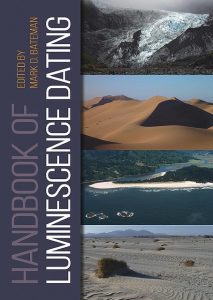A handbook for all geoscientists and archaeologists, who are interested in luminescence dating. It provides useful guidance on interpreting luminescence ages and using them in chronological frameworks, with a focus on various geomorphological contexts.

It explains what luminescence can and can’t do, what and where to sample, types of measurements available and how to interpret and analyse ages once they are measured. It is accordingly for scientists who require luminescence ages for their research rather than those scientists developing the luminescence technique or making their own luminescence measurements. The background to the technique is explained in simple terms so that the range of potential applications, limits and issues can be understood. The book helps scientists plan where and what to sample to optimise the successful application of luminescence and stemming from that the chronologies that can be constructed. The Handbook sets out the challenges and limitations when applying luminescence dating in different environmental and archaeological settings and gives practical advice on how issues might be avoided in sampling, or mitigated by requesting different laboratory measurement approaches or analysis.
The book is written by luminescence experts with a strong geomorphological background, with a chapter on fluvial and hillslope environments written by one of our AKG members Markus Fuchs.

